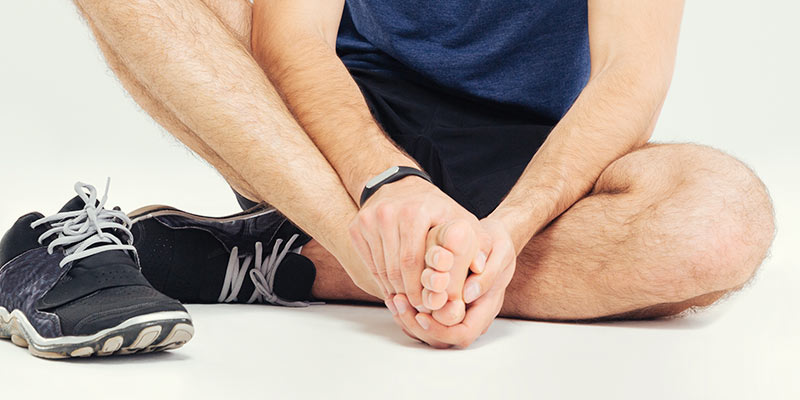Plantar fasciitis is one of the most common sources of heel pain.
Your plantar fascia is a thick fibrous band of connective tissue originating on the bottom surface of your heel bone and extends along the sole of the foot towards the toes. Your plantar fascia acts as a passive limitation to the over flattening of you arch. When this plantar fascia develops micro tears or becomes inflamed it is known as plantar fasciitis.
What are the symptoms of Plantar Fasciitis?
 One of the most common sources of heel pain, typically noticed on the underside of your heel or in your foot arch first thing in the morning. Most commonly, the main source of pain is often about 4cm forward from your heel, which may be tender to touch.
One of the most common sources of heel pain, typically noticed on the underside of your heel or in your foot arch first thing in the morning. Most commonly, the main source of pain is often about 4cm forward from your heel, which may be tender to touch.
The heel pain will often be worse with your first steps and improve with activity as it warms up. However, a long walk or being on your feet for a long time often makes the pain worse. Resting your foot again usually eases the pain.
Sudden stretching of the sole of your foot may also make the pain worse – for example, walking up stairs or on tiptoes. You may limp because of pain. Some people even have plantar fasciitis in both feet at the same time.
What causes Plantar Fasciitis?
Often there is no apparent cause for plantar fasciitis, particularly in older people. A common wrong belief is that the pain is due to a bony growth, or ‘spur’, coming from the heel bone. Many people do have a bony spur of the heel bone but not everyone with this develops plantar fasciitis.
It is most likely to occur through repeated ‘small’ injuries to the fascia. These injuries are usually near to where the plantar fascia attaches to your heel bone.
You are however more likely to injure your plantar fascia by:
- Standing on your feet a lot, or do lots of walking, running etc. Especially when you are not used to it.
- Start to exercise on a different surface. For example, running on the road instead of a dirt track.
- Wearing shoes with poor cushioning or poor arch support.
- Being overweight. This can put extra strain on your heel.
- Have a tight Achilles tendon (the big tendon at the bottom of your calf muscles above your heel). This can affect your ability to flex your ankle and make you more likely to damage your plantar fascia.
Treating Plantar Fasciitis with Massage.

Remedial Massage (deep tissue technique) concentrates on the deeper muscle tissues by applying pressure on the fascia, Achilles heel, and calf muscles through slow strokes. The muscle fibres can be followed or pressure can be applied across tendons. This helps to loosen the muscle tissues, release tension and physically break down any adhesions formed in the muscle.
During the massage treatment pressure will be concentrated on specific areas, loosening muscle tissues, removing muscle toxins, and ensuring proper circulation of blood and oxygen. This may lead to soreness, both before and after the massage, yet the results are definite and can be felt within just a couple of days. Following the treatment, it is advisable to drink a lot of water to help hydrate the muscles.
The following one-minute video demonstrates the most common techniques to help stretch and reduce tension in the calf muscles and plantar fascia, as well as to break up scar tissue.
Preventing Plantar Fasciitis from reoccurring.
There are certain things that you can do to try to prevent plantar fasciitis, especially if you have had it before. These include:
- Wearing shoes with good cushioning in the heels and good arch support.
- Losing weight if you are overweight.
- Regularly stretching the plantar fascia and achilles tendon before exercising.
- Avoid exercising on hard surfaces.
Even if you are not feeling pain in your heel or arch, it’s a good idea to look after your feet. They are, after all, the hardest working and most neglected muscle in your body. Despite the rough treatment they receive each day, we don’t look after them as well as we do our face or body. Massage therapy now can help to prevent pain and other issues with your feet down the track.
Getting a massage can do you a world of good. And getting massage frequently can do even more. Tip the scales in your favor …and keep it that way! Include massage as part of your work schedule.
For more information on the benefits of Remedial and Deep Tissue Massage follow the links.


